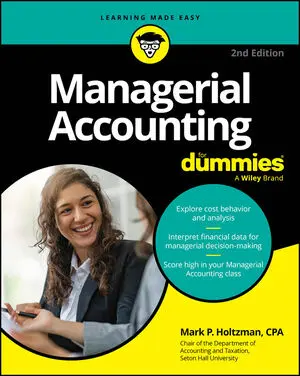Manufacturers aren’t the only companies that need master budgeting. Retailers and service providers have to plan ahead, too. Here are some tips on how to adapt the manufacturer’s master budgeting process for other industries.
Budget a retailer
Remember that a retailer buys and sells goods. Unlike a manufacturer, it doesn’t make goods. Therefore, it just operates stores or warehouses, not factories.
Even without all the burdens of manufacturing, retailers still must prepare budgets. However, their merchandise purchases budget replaces the need for a production budget, direct materials budget, and overhead budget. A retailer uses its merchandise purchases budget to prepare a schedule of cash payments in order to complete its cash budget.
The merchandise purchases budget uses the same budget formula as the manufacturer’s budget does:
Beginning + Inputs – Ending = Outputs
Here, the retailer wants to know inputs — how much merchandise to buy. The outputs equal the budgeted cost of goods sold. Ending means the desired balance of ending inventory, and beginning reflects the existing balance of inventory at the beginning of the period. You can apply this formula in total, for separate quarters or months, or even for individual products.
Pickers, Inc., owns a chain of mall stores that sell clothing. The company’s inventory on December 31, 2012, equaled $250,000. The company budgets predict cost of goods sold in 2013 of $325,000 and desired ending inventory on December 31, 2013, of $210,000. The following figure shows how the company estimates the merchandise purchases needed for next year.

This merchandise purchases budget indicates that Pickers needs to purchase $285,000 worth of merchandise during the period.
Coordinate a service company's budget
Service companies, such as law offices, limousine services, and cellphone companies, sell services rather than products. Like manufacturers and retailers, service companies also need to prepare budgets. However, service companies need to focus on their direct labor budgets because direct labor usually comprises most of these companies’ expenses.
Overstaffing (hiring too many workers) can drag down profits. Understaffing can cause employees to work excessive overtime or even force the company to turn down business.
For a service company, the direct labor budget feeds right into the cash budget and the budgeted income statement. Service companies usually have no need for production or overhead budgets.






